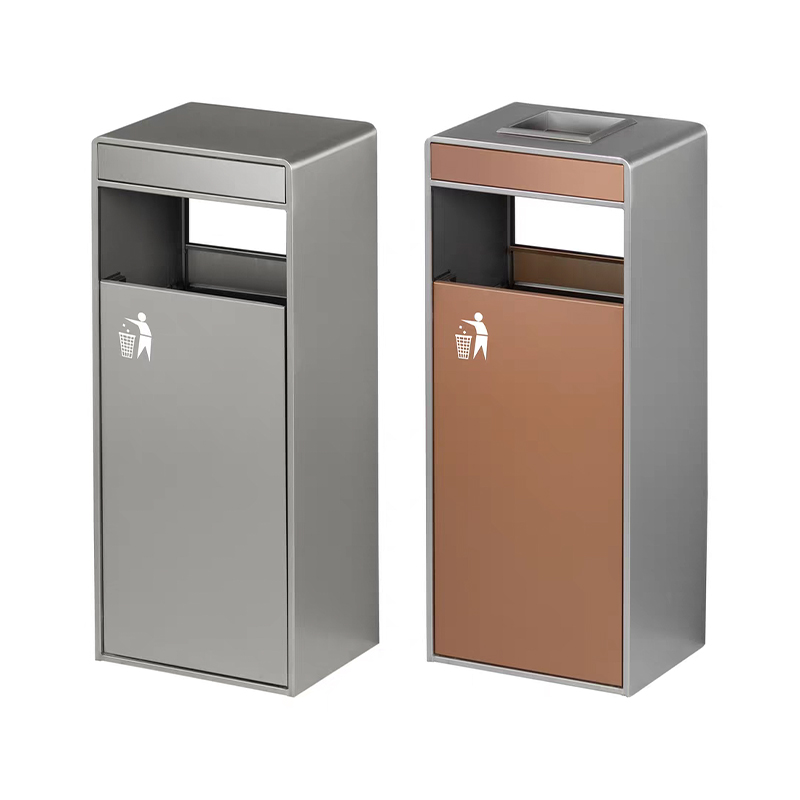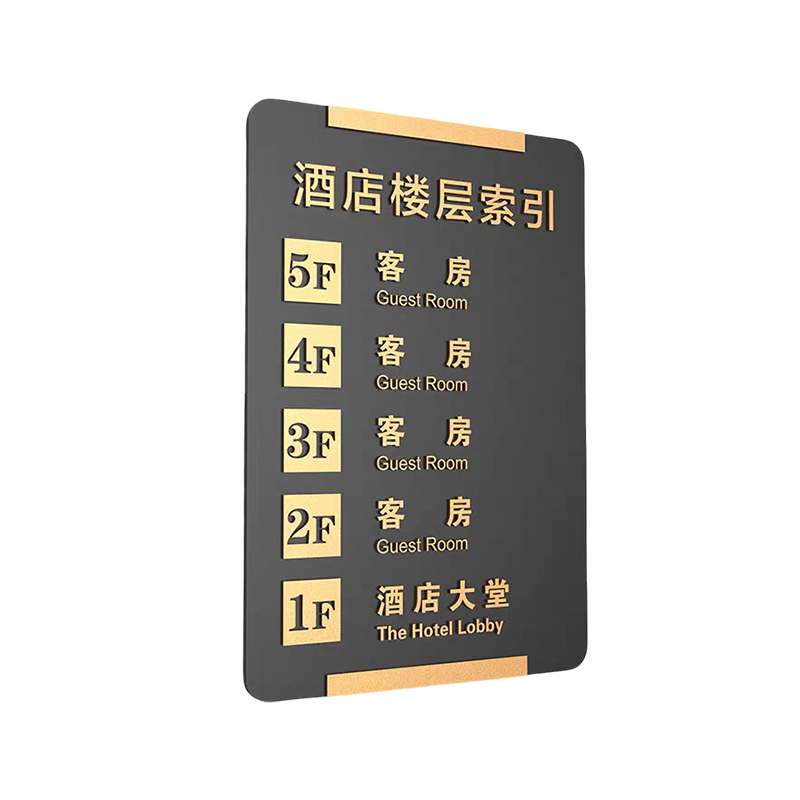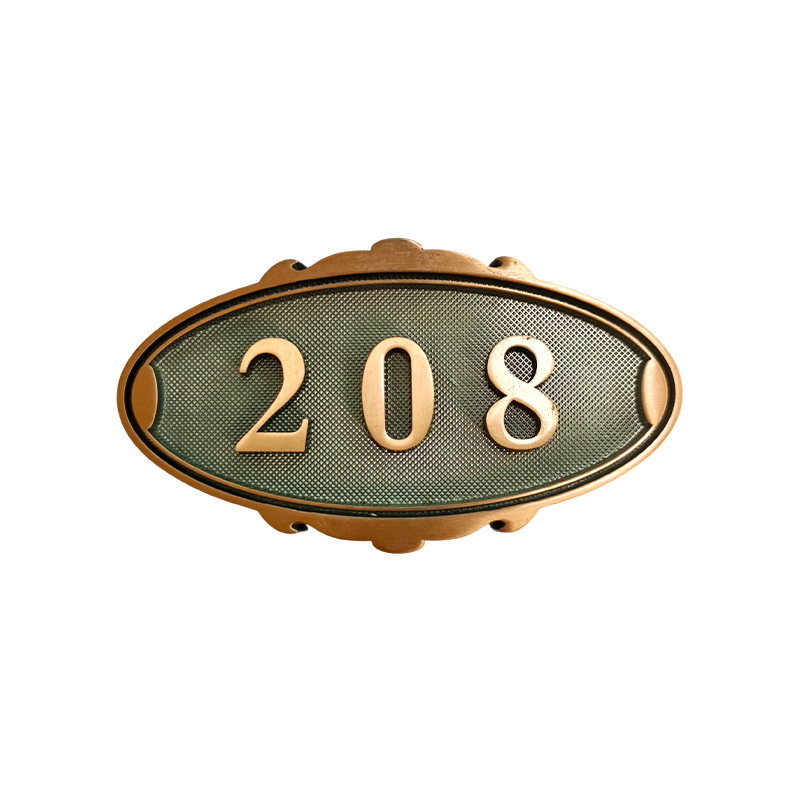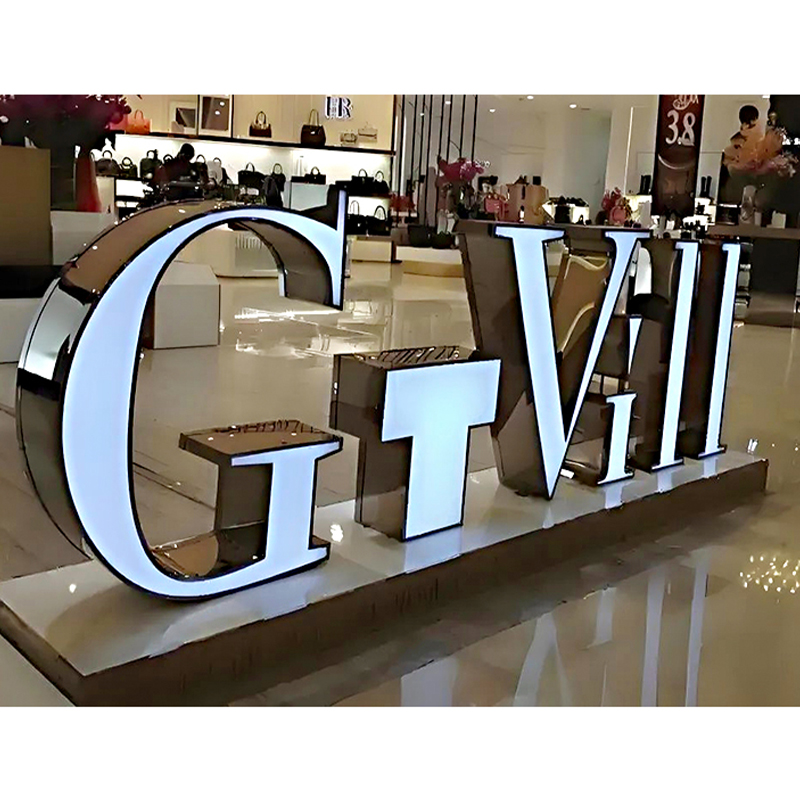How do signage silently guide the behavior of millions?
Release Time : 2025-11-20
In modern cities and public spaces, people navigate complex environments such as airports, train stations, hospitals, and shopping malls daily, yet rarely realize how they "naturally" find their destinations. This seemingly unconscious, fluid movement relies on a silent yet efficient communication medium—signage. Especially when these signs are made of high-quality stainless steel and incorporate advanced technology and intelligent design, they transcend simple directional tools, becoming silent yet powerful behavioral guides.
1. Stainless Steel: A Dual Expression of Durability and Aesthetics
Signage is exposed to high-traffic, ever-changing public spaces for extended periods, requiring a material that balances durability and aesthetics. Stainless steel, with its corrosion resistance, high strength, ease of cleaning, and modern appeal, is the preferred material for high-end wayfinding systems. Whether in damp underground parking garages, high-traffic subway stations, or hospital corridors with stringent cleanliness requirements, stainless steel signage can serve reliably for years without losing its luster. More importantly, its cool and simple metallic texture naturally aligns with the aesthetic language of modern architecture, achieving a harmonious unity between function and form.
2. Precision Craftsmanship: Making Information Transmission Clearer and More Moving
An excellent signage is not only a carrier of content but also a crystallization of craftsmanship. Utilizing fiber laser cutting technology, it achieves millimeter-level precision in contour shaping and text cutout, with smooth, burr-free edges. Through CNC bending and seamless welding, a three-dimensional structure is created, enhancing visual depth. Surface treatment is chosen based on the scene requirements, opting for electroplating or environmentally friendly spray painting, which both prevents oxidation and enhances texture. Text and icons are often presented through laser engraving or cutout, combined with an internal acrylic translucent panel and LED light source to achieve uniform and soft backlighting or side-emitting effects. The color temperature of the light can be customized according to the ambient atmosphere—warm white light creates a sense of warmth, while cool white light highlights efficiency and order. This comprehensive design of "light + form + material" ensures that the signage remains clearly legible even at night or in low-light environments, silent yet eye-catching.
3. Customized Size and Scene Adaptation: Precisely Serving Different Spatial Logic
Signage is not a "one-size-fits-all" product. Supermarkets need small, eye-catching shelf signs, while airports rely on large, suspended integrated wayfinding systems; schools emphasize friendliness and color recognition, while hospitals pursue simplicity, sterility, and clear direction. Therefore, size, proportion, and installation method can all be customized to ensure optimal viewing distance and reading angle in a specific space. This high degree of adaptability allows signage to "integrate" into the environment rather than appear abrupt, thus guiding pedestrian flow more naturally.
4. Silent Guidance: A Combination of Behavioral Psychology and Spatial Narrative
The reason signage can "guide millions" lies in its clever use of human visual habits and cognitive instincts. Internationally recognized graphic symbols transcend language barriers; color psychology triggers conditioned reflexes; font size and typographic hierarchy control the priority of information reading. All of this design completes the "instruction" to the viewer within seconds, without words or coercion, yet highly efficient and orderly. At high-speed rail stations during peak hours, these ubiquitous illuminated stainless steel signs prevent thousands of passengers from getting lost or congested in complex traffic flow; in emergency room corridors late at night, softly illuminated directional signs guide anxious families. They stand silently, yet construct an invisible network of behavioral guidance.
A sign made of stainless steel, incorporating laser cutting, LED lighting, and customized design, has long transcended the scope of a traditional "sign." It is the intersection of industrial manufacturing, visual communication, and spatial behavior, a "silent commander" in urban infrastructure. Silently, day after day, it organizes the flow of people, reduces anxiety, and improves efficiency, quietly shaping the order and warmth of modern public life. It is because of this that we can walk with peace of mind and composure in this complex world.
1. Stainless Steel: A Dual Expression of Durability and Aesthetics
Signage is exposed to high-traffic, ever-changing public spaces for extended periods, requiring a material that balances durability and aesthetics. Stainless steel, with its corrosion resistance, high strength, ease of cleaning, and modern appeal, is the preferred material for high-end wayfinding systems. Whether in damp underground parking garages, high-traffic subway stations, or hospital corridors with stringent cleanliness requirements, stainless steel signage can serve reliably for years without losing its luster. More importantly, its cool and simple metallic texture naturally aligns with the aesthetic language of modern architecture, achieving a harmonious unity between function and form.
2. Precision Craftsmanship: Making Information Transmission Clearer and More Moving
An excellent signage is not only a carrier of content but also a crystallization of craftsmanship. Utilizing fiber laser cutting technology, it achieves millimeter-level precision in contour shaping and text cutout, with smooth, burr-free edges. Through CNC bending and seamless welding, a three-dimensional structure is created, enhancing visual depth. Surface treatment is chosen based on the scene requirements, opting for electroplating or environmentally friendly spray painting, which both prevents oxidation and enhances texture. Text and icons are often presented through laser engraving or cutout, combined with an internal acrylic translucent panel and LED light source to achieve uniform and soft backlighting or side-emitting effects. The color temperature of the light can be customized according to the ambient atmosphere—warm white light creates a sense of warmth, while cool white light highlights efficiency and order. This comprehensive design of "light + form + material" ensures that the signage remains clearly legible even at night or in low-light environments, silent yet eye-catching.
3. Customized Size and Scene Adaptation: Precisely Serving Different Spatial Logic
Signage is not a "one-size-fits-all" product. Supermarkets need small, eye-catching shelf signs, while airports rely on large, suspended integrated wayfinding systems; schools emphasize friendliness and color recognition, while hospitals pursue simplicity, sterility, and clear direction. Therefore, size, proportion, and installation method can all be customized to ensure optimal viewing distance and reading angle in a specific space. This high degree of adaptability allows signage to "integrate" into the environment rather than appear abrupt, thus guiding pedestrian flow more naturally.
4. Silent Guidance: A Combination of Behavioral Psychology and Spatial Narrative
The reason signage can "guide millions" lies in its clever use of human visual habits and cognitive instincts. Internationally recognized graphic symbols transcend language barriers; color psychology triggers conditioned reflexes; font size and typographic hierarchy control the priority of information reading. All of this design completes the "instruction" to the viewer within seconds, without words or coercion, yet highly efficient and orderly. At high-speed rail stations during peak hours, these ubiquitous illuminated stainless steel signs prevent thousands of passengers from getting lost or congested in complex traffic flow; in emergency room corridors late at night, softly illuminated directional signs guide anxious families. They stand silently, yet construct an invisible network of behavioral guidance.
A sign made of stainless steel, incorporating laser cutting, LED lighting, and customized design, has long transcended the scope of a traditional "sign." It is the intersection of industrial manufacturing, visual communication, and spatial behavior, a "silent commander" in urban infrastructure. Silently, day after day, it organizes the flow of people, reduces anxiety, and improves efficiency, quietly shaping the order and warmth of modern public life. It is because of this that we can walk with peace of mind and composure in this complex world.







